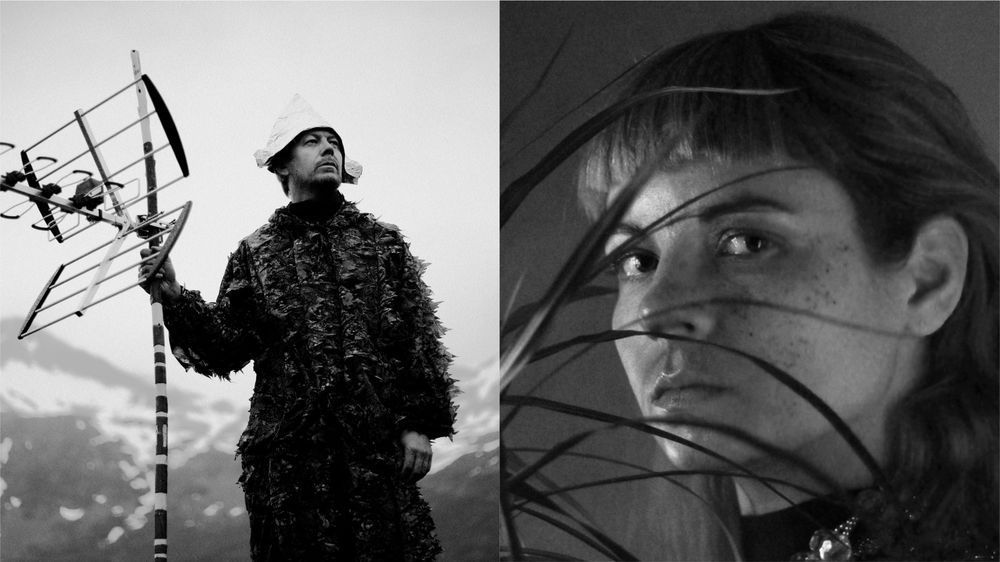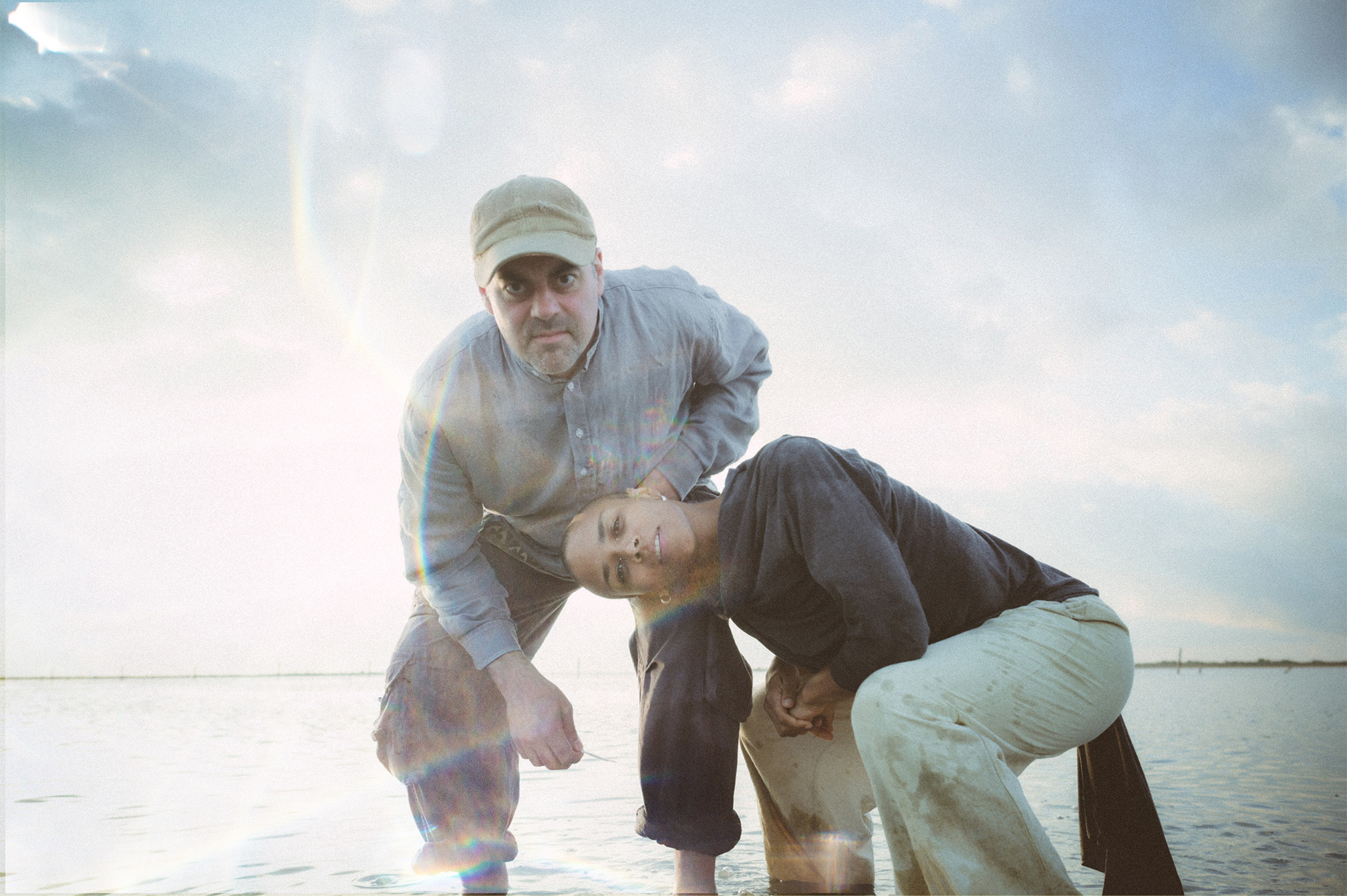Artist To Artist: Mental Overdrive & Charlotte Bendiks

Tomorrow marks the release of a new EP on MUSAR Records, an imprint which has begun to flourish in recent years following appearances from Ricardo Tobar, J. Wiltshire, Annie Hall and more. However, the release of EP from Mental Overdrive is likely the most prominent and distinctive to date, a collaboration between one of Norway's most innovative cosmic house and techno icons alongside musicians Chiwoniso Maraire and Anania Ngoliga. It's a wonderful meeting of worlds and taste, blending the roots between the traditional heritage of Tanzania with experimental electronics. Such a collaboration is unprecedented and is truly indicative of international musical relations and crossover.
The EP was long in the works as the label tells the story…
"The recordings present on the EP began life in 2004, when Per Martinsen and Aggie Peterson were invited to Tanzania by Norwegian radio producer Sigbjørn Nedland to take part in recording sessions with local musicians in Dar es Salaam and Bagamoyo. Despite the “super-inspiring” nature of the sessions, the recordings had been languishing on a hard-drive for over a decade, until their rediscovery leads to them becoming much sought-after, charismatic dancefloor weapons amongst a tight network of DJs."
The release also features an imaginative remix from Charlotte Bendiks alongside Boska. Charlotte was a driving force behind the release of the EP, helping to inspire the totality of the record and pushing for the appropriate outlet. As such it seemed apt that we ask Per Martinsen (Mental Overdrive) and Charlotte Bendiks to discuss the finished product and review…

Charlotte asks Per…
1. Per, there are many artists featured on this release, and I am curious to know how the collaboration with the artists featured on the original tracks came together, can you tell us the story?
Sigbjørn Nedland, a Norwegian radio host with a legendary legacy of presenting new music on national radio NRK over the last four decades, invited me and my partner Aggie Frost down to Tanzania to do some recording sessions with local musicians back in 2004. We spent a few days with a handful of very talented people in a studio in Ilala, then travelled up to Bagamoyo for some more meetings and jams. Most of the files from the sessions have since been lying around on drives in my studio, and opened from time to time to try and incorporate them in new productions or “finishing” something. The people we met and played together with also introduced us to their perspective on music, which not so much focused on “producing” recordings rather than play music together as a living, but maybe more ephemeral experience. Since then I’ve gradually changed my own approach from "producing tracks” more towards improvising live on my modular and hardware systems either in the studio or live, and only sometimes document these jams. That said I still release stuff, but more in a documentary way than before, and with a focus on post-production rather than composition. After including the Tanzania recordings in some live sets I ended up mixing down the two tunes on the release. The jams included are on one side the duet between Anania Ngoliga and Chowoniso Maraire, who are both top performers on their interments. At the time of recording they considered these sessions unique in documenting the two instruments together. Chiwoniso is unfortunately not with us anymore and sadly passed away far to young in 2013. The litungu recording with Maulid Mohammed was done outdoors with very simple recording equipment and captures a very wild and “punk” vibe in my opinion.
2. And speaking of traditional music and folk music, can you recognize any similarities between the traditional music and instruments from Tanzania on this release with the Sami folk music from the northern areas where we are from? And on that note, a belated Lihkku Beivviin for the 6th of February (the national day of the Sami people).
Thank you. I think the climate and landscape caters for the greatest differences in all kinds of traditional music. I find the beat of the north much slower and more meditative, and the West African energy much more explosive and joyful. But I guess it’s also a question of trying to play an instrument with your fingers and balls frozen blue, with slow-digestive meat the only available nutrition, versus gigging outdoors in a warm climate surrounded with ripe fruit and smiling people. That said, I believe the main goal of any music, traditional or contemporary, is to somehow transform the consciousness of the listener, so it’s all shamanic business going down here in any way.
3. Further, I would like to ask you to talk about your process of combining traditional music and instruments with modern electronic music?
It’s all vibrations, man. Just stuff oscillating in space, whether it’s strings, vocal chords, drum skins or speaker membranes. Just vibes. Same thing. It’s just about getting it to resonate together.
4. Which track is your favourite on this release, and why?
I’m changing my mind about music at a very rapid rate, so it's an impossible task to answer this. But I liked the grittiness and 7/4 beat of “Litungu” while hearing back the whole EP recently.
5. Can you tell the story about how this release came together? With everybody involved, from musicians to remixers and the label?
It was you, wasn’t it? I gave some raw versions of the tracks to a handful of friends who played the tunes at various spots, and you and Boska did a remix that you played to David at Musar, right?
– Well yeah, but I thought that the story could be a bit more magical… You know… The tracks were made after a trip with Aggie to meet these amazing musicians, asking me and Boska who have been a big part of your extended Love OD musical family do the remix, and then somehow I met David who told me about his label and I remembered your tracks. I think it is a kind of beautiful story of how these tracks involved so many different people who are somehow all part of an extended musical network of friends.
As mentioned above we recorded quite a few jams with all the great musicians me and Aggie met in Dar and Bagamoyo. Sometimes we were mere spectators to great performances, other times we all played together. I didn’t spend too much time thinking very hard about what to do with the recordings at the time, they were rather just documentation of a great experience. Later I played around with some of the recordings in some of my live sets, and remember getting some questions about where these parts came from. I did some early versions of the Mbira/Kalimba tune that I gave to some people who asked. I gave one of these versions to Esa Williams when he visited my studio in Tromsø, and he used it in one of his mixes, and Charlotte played it out and immediately asked me for stems, whereby hers and Boska’s remix was made. I guess another couple of years went before she played the tracks to David at MUSAR and he got the ball rolling to release it and brought in DMX Krew for an additional mix to complete the EP.
6. What's next for the Mental Overdrive project?
I’m doing a handful of selected gigs this spring. First up is at an arts festival in Kirkenes at the Russian border called Barentsspektakel. The theme of the festival is to create the “Northernmost China” in the world, so I will be improvising music on a basis of sound files I’ve recorded in Shanghai or collected online for a mashup of sounds related to Chinese culture. I’m also constantly working on various experiments in the studio at the moment, either as part of my new Artistic Research project “The Search for Resonance” or just for the hell of it.
Per asks Charlotte…
1. You have a very distinct style when doing your own beats with a "no bullshit” approach and no over-saturated soundscapes. It’s usually only a backbone of rhythm, bass, monophonic synth melodies and a single voice. Do you feel a relation to some of the West African beats and your own output, and do you think dance music requires a minimalistic sound for it to work the way you want it to?
I don't think I feel a relation to only west African beats, but I do feel a relation to a lot of traditional folk rhythms. Any kind of repetitive, trancy rhythms that make me feel what I call the body music vibe. That could be west African beats, south American rhythms, sami shamanistic drums, manele and so much more. I always do a test in the studio when working on a track, I make the laptop screen black, stand up and dance to the rhythms to see how they make me move my body. After listening without the screen taking all my attention, I work on stretching the rhythms so that I feel that the music moves the right parts of me while dancing to the track.
2. Are you a sha(wo)man?
I am a shawo(w)man, for sure. But I try to only use my powers for good.
3. What are you working on at the moment? Any new releases in the pipeline? Headlining any trance-festivals in the near future?
After 2018 filled with a lot of new projects like workshops and art installations, I am very happy to focus more on music making in 2019. I have some drops like remixes and tracks on compilations planned, but for the moment I am not working toward a release. I am enjoying making music and trying not to think too much on where the tracks will end up. I realized that when I work on music toward requests for demos from labels, I end up forgetting the stories behind my tracks and focus on production and in the end I just sit tuning kick drums instead of actually making music. I have some titles I have been working on, with stories of course; Bon-Sexy, Hjemme Erotic, Ritu ++ it's cooking.. And of course I will headline the Narvik – Give Trance a Chance festival, if it ever happens…
Buy HERE.


















Must Reads
David Holmes – Humanity As An Act Of Resistance in three chapters
As a nation, the Irish have always had a profound relationship with the people of Palestine
Rotterdam – A City which Bounces Back
The Dutch city is in a state of constant revival
Going Remote.
Home swapping as a lifestyle choice
Trending track
Vels d’Èter
Glass Isle
Shop NowDreaming
Timothy Clerkin
Shop Now